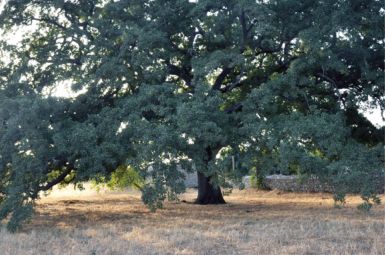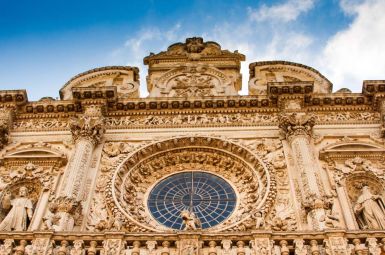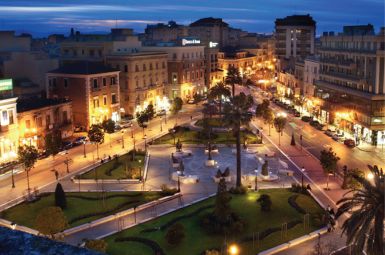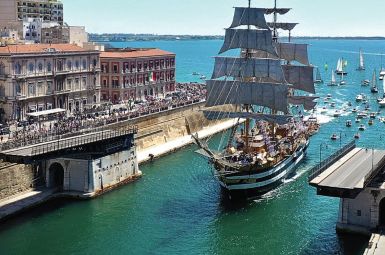
Fontanellato
Il Borgo di Fontanellato
La Rocca Sanvitale: Un Castello a Specchio d’Acqua
Il cuore pulsante di Fontanellato è la Rocca Sanvitale, un castello perfettamente conservato che si erge maestoso, completamente circondato dal suo fossato pieno d’acqua. Fondata nel XII secolo dai Pallavicino e poi trasformata in elegante residenza nobiliare dai Conti Sanvitale, la Rocca cattura l’immaginazione con il suo aspetto fiabesco e la sua solida architettura difensiva.- Il Capolavoro del Parmigianino: Il tesoro più prezioso custodito all’interno è la Saletta di Diana e Atteone. Qui, nel 1524, il giovanissimo Francesco Mazzola detto il Parmigianino, uno dei massimi esponenti del Manierismo, dipinse un ciclo di affreschi di sublime eleganza. L’opera, ricca di simbolismi e mistero, è un piccolo gioiello pittorico che da solo vale il viaggio.
- Curiosità: La Camera Ottica: La Rocca nasconde anche un’affascinante camera ottica funzionante, unica in Italia, che proietta l’immagine della piazza esterna capovolta su una superficie curva, offrendo ai visitatori uno sguardo sul passato e sulle meraviglie della pre-fotografia.
Il Labirinto della Masone: Il Gigante di Bambù
A pochi chilometri dal centro storico, Fontanellato ospita un’attrazione di fama mondiale: il Labirinto della Masone, ideato dall’editore, designer e collezionista Franco Maria Ricci.- Il Più Grande del Mondo: Con i suoi sette ettari di estensione, è il labirinto di bambù più grande esistente al mondo. Percorrere i suoi sentieri alti e fitti è un’esperienza sensoriale e meditativa, un viaggio nell’eleganza e nell’ossessione per il bello.
- Cultura e Arte: Al centro del dedalo si trovano una piazza monumentale e una piramide-cappella, che fanno da cornice a una collezione d’arte di Franco Maria Ricci, con capolavori che abbracciano cinque secoli di storia dell’arte.
Gusto e Tradizione
Fontanellato è infine parte integrante della Food Valley parmense. Il borgo si trova lungo la “Strada del Culatello di Zibello,” ed è il luogo ideale per degustare le eccellenze del territorio: dal Culatello e la Spalla Cotta di San Secondo al celebre Parmigiano Reggiano, completando l’esperienza culturale con il piacere enogastronomico.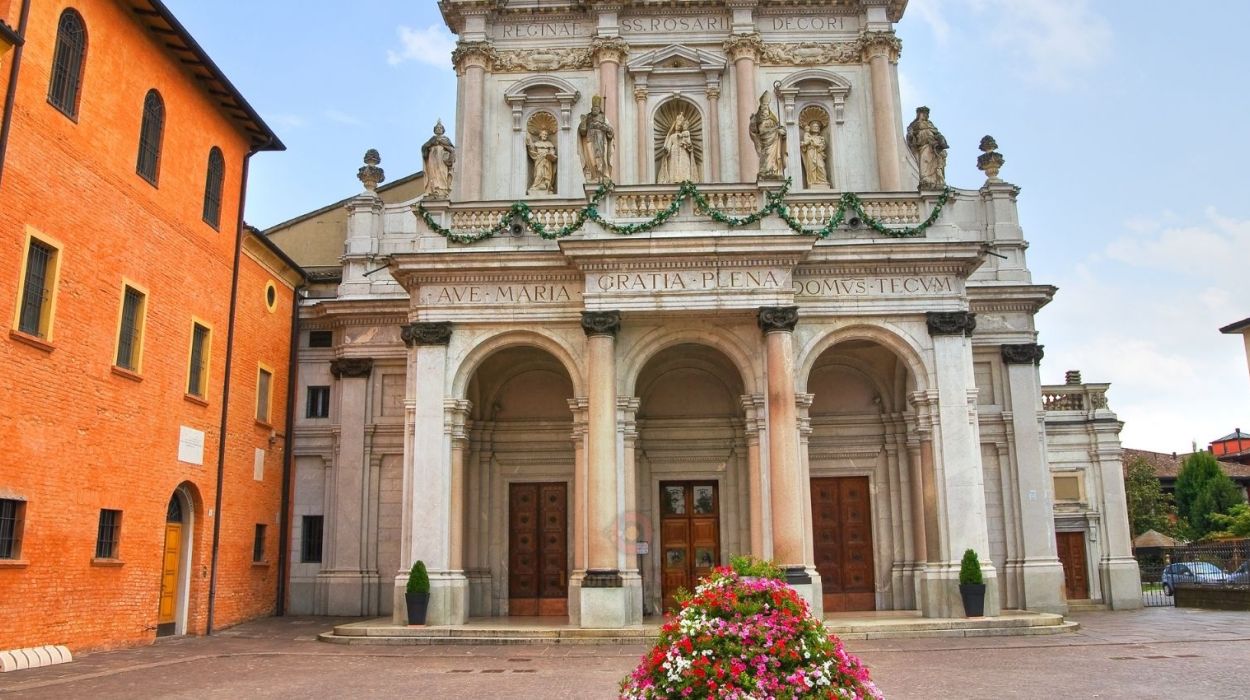
Il Borgo d’Italia
tutto da scoprire ed esplorare
Monumenti
Fontanellato: Il Borgo d’Acqua e d’Arte tra Fortezza Rinascimentale e Fede Barocca
Fontanellato non è un semplice paese, è una preziosa gemma incastonata nella Bassa Parmense, un luogo dove la robustezza della storia medievale si fonde con la raffinatezza dell’arte rinascimentale. I suoi monumenti principali non raccontano solo l’evoluzione architettonica, ma soprattutto il passaggio tra la vita di corte e la profonda devozione popolare.
1. La Rocca Sanvitale: La Fortezza Sull’Acqua e la “Camera Segreta”
La Rocca Sanvitale è il simbolo inconfondibile di Fontanellato, un raro e affascinante esempio di fortezza interamente circondata da un fossato d’acqua perenne, che ne riflette le possenti mura e i torrioni.
- Geometria inespugnabile: Nata come baluardo difensivo nel XII secolo sotto i Pallavicino, fu trasformata in elegante residenza rinascimentale dalla famiglia Sanvitale nel corso del tempo. Il suo aspetto attuale è un perfetto equilibrio tra la severità militare del Medioevo e la grazia di una corte signorile.
- La Sala di Diana e Atteone (Il Tesoro del Parmigianino): Il vero gioiello della Rocca è la minuscola “Stufetta” (bagno privato) affrescata dal giovanissimo Francesco Mazzola, detto il Parmigianino, tra il 1523 e il 1524. Questo capolavoro del Manierismo raffigura il mito di Diana e Atteone tratto dalle Metamorfosi di Ovidio. L’affresco, concepito come un’illusoria pergola, rappresenta uno dei cicli pittorici più enigmatici e seducenti del Rinascimento, un’opera d’arte intima e rivoluzionaria.
- La Camera Ottica: Un’altra curiosità unica in Italia è la Camera Ottica ancora funzionante. Grazie a un ingegnoso sistema di prismi e specchi, i visitatori possono osservare in tempo reale e capovolte le immagini della piazza antistante proiettate su uno schermo, un affascinante “antenato” della fotografia e del cinema.
2. Santuario della Beata Vergine del Santo Rosario: Il Polo della Fede
All’estremità opposta del borgo sorge l’imponente Santuario della Beata Vergine del Santo Rosario, un luogo di profonda venerazione mariana e un superbo esempio di architettura sacra.
- Culla di Devozione: Sorto su una preesistente cappella, l’attuale Santuario fu costruito a partire dal XVII secolo, grazie al patrocinio della famiglia Sanvitale e all’opera dei Padri Domenicani, che ne hanno promosso il culto legato al Rosario.
- Il Richiamo dei Miracoli: La Basilica, con la sua maestosa pianta a croce latina e l’unica navata, custodisce pregevoli opere barocche. Di particolare impatto è la Galleria degli Ex Voto, una ricchissima raccolta di tavolette votive, che testimoniano secoli di fede e di grazie ricevute da parte dei pellegrini, rendendolo il centro mariano più caro e visitato del Parmense.
3. Altri Punti di Interesse Storico-Religioso
La vita del borgo si sviluppa attorno a questi due poli, includendo altre testimonianze del passato.
- Chiesa di Santa Croce: Eretta originariamente nel 1447, questa chiesa sulla piazza prospiciente la Rocca mostra il continuo legame tra la famiglia Sanvitale e la vita religiosa del paese.
- Oratorio dell’Assunta: Piccolo ma significativo, ospita all’interno opere pittoriche di rilievo, tra cui tele del senese Antonio Nasini.
La visita a Fontanellato è un viaggio nel tempo che coniuga il fascino austero delle fortezze medievali con la bellezza segreta e intellettuale dell’arte di corte.
Curiosità
Fontanellato: Curiosità e Segreti del Borgo Fortificato tra Alchimia, Fantasmi e Ottica Rinascimentale
Fontanellato, con la sua inconfondibile Rocca Sanvitale circondata da un fossato colmo d’acqua, non è solo una meta storica; è un concentrato di curiosità che mescolano arte sublime, ingegneria ottica e leggende che resistono al tempo, rendendolo uno dei borghi più affascinanti dell’Emilia-Romagna.
La Rocca Sanvitale: Unico nel Suo Genere
Il cuore di Fontanellato è la sua rocca, un baluardo che nasconde storie di bellezza e ingegno unici.
- Il Castello Sull’Acqua: La Rocca Sanvitale si distingue per essere uno dei pochi castelli in Italia (e forse l’unico) ad avere il fossato storico costantemente pieno d’acqua. Questa particolarità è dovuta alla presenza di risorgive naturali che alimentano il fossato, da cui deriva il nome stesso del paese: Fontana lata, ovvero “sorgente abbondante”.
- La “Camera Ottica” Funzionante: All’interno della Rocca si trova un gioiello di ingegneria seicentesca: una Camera Ottica perfettamente funzionante. Attraverso un ingegnoso sistema di lenti e specchi, i visitatori possono osservare le immagini della piazza antistante proiettate, capovolte e in tempo reale, su uno schermo all’interno della stanza buia. Questo dispositivo, di fatto un antenato della macchina fotografica, aggiunge un tocco di magia scientifica alla visita.
- Il Capolavoro Nascosto del Parmigianino: La Rocca custodisce la celebre “Stufetta di Diana e Atteone”, affrescata dal giovane e geniale pittore manierista Parmigianino (Francesco Mazzola) tra il 1523 e il 1524. Questo ciclo pittorico, considerato un capolavoro assoluto, era originariamente il bagno privato (o studiolo alchemico) della contessa Paola Gonzaga, ed è rimasto “segreto” per secoli. L’affresco è una mirabile illusione prospettica, un pergolato che si apre sul cielo azzurro, e racchiude simboli ermetici e allegorie mitologiche ancora oggetto di studio.
Leggende e Tradizioni Popolari
La storia di Fontanellato non è fatta solo di pietra e arte, ma anche di spiritualità e aneddoti misteriosi.
- Fantasmi e Presenze: Come ogni castello che si rispetti, anche la Rocca Sanvitale vanta la sua leggenda di fantasmi. Si narra della presenza dello spirito di Bermond o Bertrando Sanvitale, un bambino morto in circostanze tragiche. Si dice che lo spirito del fanciullo si manifesti periodicamente, rendendo la fortezza meta di appassionati di ghost hunting.
- Il Voto dei Domenicani: L’imponente Santuario della Beata Vergine del Santo Rosario fu costruito a partire dal Seicento in adempimento di un voto fatto dalla comunità per invocare la protezione della Madonna contro la peste. Il Santuario è oggi il cuore della fede mariana del Parmense, famoso per la sua ricca galleria di ex voto.
- Il Mercato dell’Antiquariato: Non una curiosità storica, ma una tradizione che anima il presente: ogni terza domenica del mese, la piazza che circonda la Rocca si trasforma in uno dei mercati di antiquariato e collezionismo più vasti e rinomati del Nord Italia, attirando appassionati e curiosi da ogni dove.
Personaggi
Fontanellato: Le Personalità che Hanno Celebrato il Borgo tra Arte, Scienza e Letteratura
Sebbene Fontanellato sia celebre a livello internazionale più per i capolavori che per i nativi illustri, il borgo ha dato i natali a figure di spicco che hanno lasciato il segno nella storia italiana e ha attirato a sé menti eccezionali, legando indissolubilmente il loro nome alla sua Rocca.
I Nativi Illustri: Scienza e Artigianato
Il vero vanto di Fontanellato tra i suoi figli è un pioniere della preistoria italiana.
Luigi Pigorini (1842 – 1925)
- Il Padre della Paletnologia Italiana: Luigi Pigorini è senza dubbio il nativo di Fontanellato più influente a livello scientifico e culturale. Fu un insigne archeologo, paletnologo e antropologo.
- Fondatore di Musei: La sua opera è cruciale per la storia della ricerca preistorica: fu co-fondatore del celebre Bullettino di Paletnologia Italiana e, soprattutto, diede il nome al Museo Nazionale Preistorico Etnografico di Roma, che oggi porta il suo nome, un’istituzione fondamentale per la conservazione del patrimonio archeologico italiano.
Giovanni Battista Biazzi
- L’Intagliatore del Barocco: Originario di Fontanellato, Giovanni Battista Biazzi fu un talentuoso intagliatore attivo nel XVII secolo.
- L’Arte nella Sagrestia: È particolarmente noto per aver realizzato i mobili lignei barocchi finemente intagliati che arredano la Sagrestia della Chiesa di Santa Croce, un esempio pregevole di artigianato locale.
Le Figure Centrali della Rocca: I Committenti d’Arte
Sebbene non nativi, i personaggi che hanno plasmato l’identità artistica e storica di Fontanellato meritano una menzione d’onore, poiché il loro destino è inciso nelle mura della Rocca.
Paola Gonzaga Sanvitale (Sabbioneta, 1500 circa – 1550)
- La Musa del Manierismo: Paola Gonzaga, nobildonna colta e raffinata, fu la vera artefice dell’eleganza rinascimentale della Rocca. Sposa del Conte Galeazzo Sanvitale, fu lei a commissionare al giovane Parmigianino (Francesco Mazzola) il ciclo di affreschi per la sua “Stufetta” privata, la celebre Saletta di Diana e Atteone.
- Icona Enigmatica: Il suo ritratto (o un suo possibile ritratto allegorico nei panni di Cerere, la dea della fertilità) si trova all’interno della saletta, rendendola per sempre legata a questo capolavoro e al mistero del Manierismo.
Francesco Mazzola, detto il Parmigianino (Parma, 1503 – 1540)
- Il Genio Precoce: Sebbene nato a Parma, la breve ma intensissima permanenza del Parmigianino a Fontanellato è l’apice della sua giovinezza artistica. La Camera di Diana e Atteone è uno dei suoi primi capolavori indipendenti, un’opera che dimostra la sua straordinaria abilità nel manipolare lo spazio e nel trasfondere allegorie mitologiche con un tocco di geniale inquietudine. La sua opera ha assicurato alla Rocca Sanvitale fama eterna nel panorama dell’arte mondiale.
Curiosità Letterarie Moderne
Infine, Fontanellato ha continuato a stimolare la fantasia e l’opera di autori contemporanei.
- La Rocca nella Letteratura: La celebre scrittrice Francesca Sanvitale, discendente del ramo cadetto della storica famiglia comitale, ha reso omaggio al castello dedicando il titolo di un suo saggio (Camera ottica) proprio al famoso dispositivo ingegneristico della Rocca, perpetuando il legame tra il maniero e la cultura contemporanea.
Ricette Tipiche
Il Paradiso della Bassa Parmense: Le Ricette di Fontanellato
Fontanellato, incorniciato dalla sua maestosa Rocca, è un’autentica capitale del gusto nella Food Valley parmense. La sua cucina è un’ode alla ricchezza della Bassa, dove i salumi più pregiati e la pasta all’uovo tirata a mano raggiungono vette di perfezione. Qui, la semplicità contadina si trasforma in lusso gastronomico.
I Salumi: Il Trionfo della “Culaccia”
Fontanellato vanta un prodotto che è la sintesi perfetta tra la dolcezza del Prosciutto di Parma e l’aromaticità del Culatello di Zibello: la Culaccia.
1. La Culaccia di Fontanellato
- L’Eccellenza Esclusiva: La Culaccia è un salume pregiato, ricavato dalla parte migliore della coscia di suino, senza l’osso e la cotenna, ma con una copertura esterna di grasso e pepe per garantirne la morbidezza durante la stagionatura. Dolce e pastosa al palato, rappresenta l’identità gastronomica più marcata e registrata del borgo.
- L’Arte dell’Assaggio: La Culaccia si gusta rigorosamente affettata sottile e accompagnata dalla celebre Torta Fritta. Questa sfoglia di pasta di pane fritta (chiamata gnocco fritto altrove) è un must irrinunciabile che, con la sua leggerezza e il calore, scioglie ogni fetta di salume in bocca.
I Primi Piatti: La Sfoglia d’Oro delle “Rezdore”
La tradizione della pasta fresca è sacra in queste terre, tramandata con rigore dalle rezdore (le reggitrici di casa) che trasformano farina e uova in autentici capolavori.
2. I Tortelli d’Erbetta (il Piatto di San Giovanni)
- Il Ripieno della Tradizione: Sono il primo piatto più iconico della primavera e dell’inizio estate, celebrati in una vera e propria festa popolare intorno al 24 giugno, giorno di San Giovanni. Il ripieno è un equilibrio perfetto di ricotta fresca e erbette (generalmente spinaci e biete).
- Il Condimento Essenziale: La loro delicatezza viene esaltata da un condimento che è pura poesia parmense: burro fuso (chiarificato, se possibile), una generosa spolverata di Parmigiano Reggiano stagionato e, immancabile, qualche foglia di salvia fresca che regala un profumo inebriante.
3. Gli Anolini in Brodo
- Il Simbolo delle Feste: L’Anolino (anolén in dialetto) è il raviolo più sacro della cucina parmense e della Bassa, il piatto imprescindibile del Natale e delle grandi celebrazioni invernali.
- La Filosofia del Ripieno: La ricetta tradizionale prevede una pasta all’uovo ripiena di Parmigiano Reggiano (spesso un mix di diverse stagionature) e, nella variante della Bassa più robusta (chiamata anche anolino con lo stracotto), l’aggiunta di carne di stracotto di manzo o vitello. Vengono cotti e serviti in un saporito e fumante brodo di carne (tradizionalmente di cappone, manzo e gallina).
L’Abbinamento Perfetto: Il Vino della Tradizione
Nessun piatto della Bassa Parmense può dirsi completo senza il suo compagno d’elezione.
Il Lambrusco: Il Rosso Frizzante
- Calice per i Salumi: Per contrastare la ricchezza dei salumi come la Culaccia e la Torta Fritta, l’abbinamento ideale è un rosso leggero, frizzante e vivace: il Lambrusco, nelle sue denominazioni locali. La sua leggera acidità e la spuma allegra “sgrassano” il palato e invitano al morso successivo, chiudendo il cerchio del gusto.
Fontanellato è dunque una tappa obbligata non solo per gli amanti della storia e dell’arte, ma per chiunque voglia immergersi nel gusto autentico e irripetibile della gastronomia ducale.
